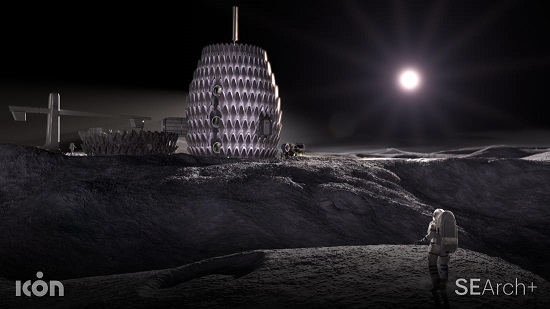 Saturday, May 18, 2024
Saturday, May 18, 2024  Saturday, May 18, 2024
Saturday, May 18, 2024 
The last time a person stepped foot on the moon was 1972. Now, the moon is back on NASA’s space agenda. This time around the agency isn’t just visiting — it’s planning to stay.
With its Artemis missions starting next year, NASA aims to have astronauts on the moon in 2024 and anticipates a permanent lunar base by the end of the decade. This would be the first habitat ever constructed on an extraterrestrial surface, and the challenges are unprecedented.
Sending a large quantity of construction materials to the moon would be expensive and time-consuming. But Texas-based startup ICON says it has a sci-fi solution — 3D printing a lunar base from moon dust.
CON is working with NASA to develop technology that can turn moon dust into a concrete-like material, says co-founder and CEO Jason Ballard. Moon dust, also known as lunar regolith, is the sand-like topsoil that covers the moon’s surface, formed from minerals and tiny shards of glass created over millions of years as meteoroids hit the moon. It’s sharp, abrasive, and extremely clingy — the Apollo astronauts found it stuck to everything, including their space suits. There’s plenty of it, which means there’s a huge supply of raw materials if ICON is successful.
The initiative is named Project Olympus after the largest-known volcano in the solar system — aptly conveying the mountain-sized challenge the team faces. But Ballard isn’t just shooting for the moon. By designing a lunar habitat, he hopes to make construction on Earth cleaner, faster and cheaper, too.